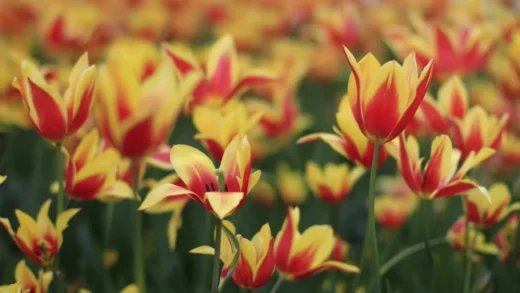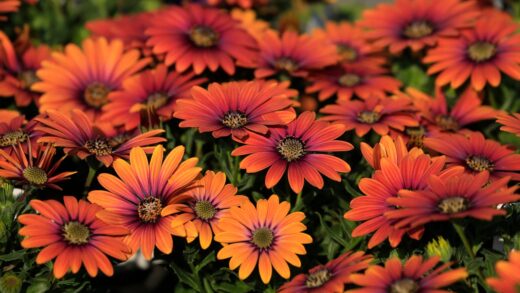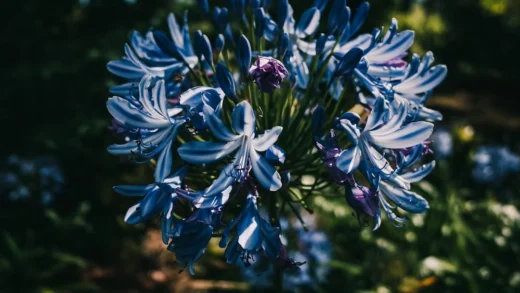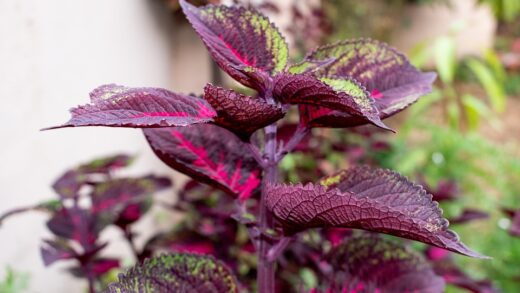Caring for an aloe vera plant is an incredibly rewarding experience, offering both aesthetic beauty and practical benefits right in your home. This succulent is renowned for its resilience and relatively low-maintenance nature, making it an ideal choice for both novice gardeners and seasoned enthusiasts. To truly thrive, however, it requires a specific set of conditions that mimic its native arid environment, which involves a careful balance of light, water, and the proper soil medium. Understanding these fundamental requirements is the first step towards cultivating a healthy, robust plant that will flourish for years to come and produce the valuable gel stored within its fleshy leaves.
Proper care begins with recognizing that aloe vera is, at its core, a desert plant adapted to survive in harsh conditions with infrequent rainfall. This genetic predisposition dictates its needs within a domestic setting, meaning it is far more susceptible to over-caring, particularly overwatering, than neglect. The thick, fleshy leaves are not just for show; they are sophisticated water storage organs, allowing the plant to endure long periods of drought. Therefore, your primary goal is to provide an environment where the plant feels at home, avoiding the common pitfalls that can lead to an untimely demise.
Successfully growing aloe vera involves a holistic approach, where you consider all aspects of its environment as interconnected. The amount of light it receives will directly influence its water requirements, while the type of pot and soil used will determine how quickly the root system dries out, preventing devastating rot. Paying close attention to these details ensures the plant not only survives but actively thrives, growing strong and producing new offshoots. A thriving aloe is characterized by firm, upright leaves with a vibrant green coloration.
Ultimately, mastering aloe vera care is about observation and response, learning to read the subtle cues the plant provides about its condition. A slight change in leaf color, texture, or growth pattern can signal a need for adjustment in your routine. By developing this attentive relationship with your plant, you can preemptively address potential issues and ensure its long-term health and vitality. This guide will provide the detailed knowledge needed to cultivate a magnificent aloe vera specimen.
The right environment for growth
Creating the ideal environment is paramount for the health of your aloe vera, and this begins with temperature. These plants prefer warm conditions, thriving in temperatures between 13 and 27 degrees Celsius, which conveniently aligns with typical indoor room temperatures. However, they are not frost-tolerant, and exposure to temperatures below freezing can cause significant damage to the leaves, leading to mushy, blackened tissue. It is therefore crucial to protect the plant from cold drafts, such as those from open windows or doors during winter.
Humidity is another environmental factor to consider, although it is less critical than temperature. Aloe vera is adapted to dry, arid climates, so it does not require high humidity levels to flourish. In fact, excessively humid conditions can sometimes promote the development of fungal diseases if air circulation is poor. Standard household humidity is generally sufficient, and there is no need to mist the plant or use a humidifier, which is often recommended for tropical houseplants. Good airflow around the plant is beneficial in preventing stagnant, moist air.
The physical location of the plant within your home plays a significant role in its overall well-being. A spot that receives plenty of bright, but indirect, sunlight is the perfect placement. An east-facing window can be ideal, as it provides gentle morning sun, or a spot a few feet away from a south or west-facing window can also work well. While aloe vera needs a lot of light, exposing it to harsh, direct afternoon sun can scorch the leaves, causing them to turn a stressful reddish-brown color.
When considering the environment, think about the plant’s long-term stability and try to avoid frequent relocations. Plants, including aloe vera, can experience stress when moved between locations with different light and temperature conditions. Find a suitable spot where the plant is not in a high-traffic area where it could be knocked over, and where it can receive consistent environmental cues. This stability will allow it to establish a strong root system and a steady growth pattern.
Soil and potting essentials
The foundation for a healthy aloe vera plant lies beneath the surface, in the choice of soil and pot. The most critical characteristic of the soil must be excellent drainage, as the plant’s roots are highly susceptible to rot in waterlogged conditions. Standard potting soil is often too dense and retains too much moisture, so it is essential to use a specialized mix. A commercially available cactus or succulent mix is an excellent choice, as it is formulated with ingredients like sand, perlite, or pumice to ensure water flows through it freely.
If you prefer to create your own soil mixture, a simple and effective recipe involves combining equal parts of regular potting soil, coarse sand, and perlite. This combination provides just enough organic matter for nutrients while ensuring the structure is loose and airy, preventing compaction and water retention around the roots. Never use sand from a beach or playground, as it may contain salts or pathogens; always opt for horticultural-grade sand. The goal is to replicate the gritty, low-nutrient soil of the aloe’s native habitat.
The choice of pot is just as important as the soil it contains. A container made from a porous material like terracotta or unglazed ceramic is highly recommended. These materials allow moisture and air to pass through the walls of the pot, helping the soil to dry out more evenly and quickly between waterings. This breathability provides an extra layer of protection against the dreaded root rot, which is the most common cause of aloe vera’s demise.
Finally, ensure that any pot you choose has at least one large drainage hole at the bottom. This is a non-negotiable feature for any succulent, including aloe vera. Without a drainage hole, excess water has no way to escape, and it will inevitably pool at the bottom of the pot, creating a swampy environment that will suffocate and rot the roots. No matter how perfect your soil mix is, its benefits will be nullified if the water is trapped inside the container.
Common care mistakes to avoid
One of the most prevalent and damaging mistakes in aloe vera care is overwatering. Driven by the desire to nurture their plants, many owners provide too much water too frequently, which is a fatal error for a succulent. Aloe vera is designed to withstand drought, and its roots cannot tolerate sitting in constantly moist soil. This leads to root rot, a condition from which the plant often cannot recover. To avoid this, always allow the soil to dry out completely before watering again.
Another common pitfall is providing inadequate light. While aloe vera can be damaged by scorching, direct sun, it still requires a significant amount of bright, indirect light to photosynthesize effectively. Placing it in a dim corner or a room with little natural light will cause the plant to become leggy and weak, a condition known as etiolation. The leaves will stretch towards the light source, lose their compact shape, and may appear pale and washed out.
Using the wrong type of soil or a pot without proper drainage is a foundational mistake that sets the plant up for failure. As previously discussed, a dense, water-retentive soil combined with a pot that traps moisture is a death sentence for an aloe vera. This combination guarantees that the roots will be deprived of oxygen and will begin to decay. It is crucial to invest in the right potting medium and container from the very beginning to build a healthy home for your plant.
Finally, a less obvious but still significant mistake is fertilizing the plant improperly. Aloe vera is not a heavy feeder and does not require frequent fertilization. Applying too much fertilizer, or applying it during the plant’s dormant winter period, can lead to a buildup of mineral salts in the soil, which can burn the roots and damage the plant. If you choose to fertilize, do so sparingly only during the spring and summer growing season with a diluted, balanced formula.
Observing your plant’s health
Regularly observing your aloe vera is key to catching potential problems early and ensuring its continued health. The leaves are the most telling indicators of the plant’s condition. Healthy leaves should be plump, firm, and display an upright growth habit. A vibrant green color, sometimes with a bluish or grayish tint, signifies a happy and well-cared-for plant. If the leaves are thin, curled, or concave, it is often a sign of underwatering.
Leaf color can provide a wealth of information about the plant’s exposure to sunlight and water. As mentioned, leaves turning a reddish-brown or orange hue are typically a sign of stress from too much direct sunlight. On the other hand, pale or yellowing leaves, especially near the base of the plant, can signal an issue with overwatering. If the yellowing is accompanied by a soft, mushy texture, it is a strong indication that root rot may have already set in.
The firmness of the leaves is another critical health marker. Gently squeezing a leaf should reveal a firm, turgid structure, full of the water-storing gel. Leaves that feel soft, mushy, or flimsy are a major red flag. This is almost always caused by excessive moisture in the soil leading to cellular breakdown within the plant’s root system and leaves. Conversely, a plant that is severely dehydrated will have leaves that feel limp and deflated.
Beyond the leaves, pay attention to the overall growth and stability of the plant. A healthy aloe vera should be firmly anchored in its pot and should produce new growth from the center during its growing season. If the plant feels wobbly or loose in its pot, it could indicate a poorly developed or rotting root system. Also, look for the emergence of small “pups” or offshoots around the base, as this is a clear sign of a mature and thriving plant.
Long-term maintenance and repotting
As your aloe vera grows, it will eventually require repotting to accommodate its expanding root system and size. A clear sign that it’s time to repot is when the roots become pot-bound, meaning they have filled the entire container and may even start growing out of the drainage hole. Another indicator is when the plant has produced so many offshoots that the pot has become overcrowded. Typically, an aloe vera will need to be moved to a larger pot every two to three years.
The ideal time to repot is in the spring or early summer, which corresponds with the beginning of the plant’s active growing season. This timing allows the plant to recover from the stress of repotting more quickly and establish itself in its new home. Choose a new pot that is only slightly larger than the previous one, about 3 to 5 centimeters wider in diameter. Moving to a pot that is too large can be detrimental, as the excess soil will hold moisture for too long and increase the risk of root rot.
When you are ready to repot, carefully remove the plant from its current container. Gently brush away the old soil from the roots and inspect them for any signs of rot, which will appear as black, mushy, or foul-smelling sections. Any unhealthy roots should be trimmed away with a clean, sharp knife. If you have removed a significant portion of the root ball due to rot, it is wise to let the plant sit out for a day or so to allow the cuts to callus over before planting it in fresh soil.
After placing the plant in its new pot with fresh, appropriate soil, do not water it immediately. Waiting for a week or so before the first watering is a crucial step that encourages the roots to grow outwards in search of moisture and allows any damaged roots time to heal, reducing the risk of rot. This period of adjustment is a key part of successful long-term maintenance, setting the stage for continued healthy growth in the years to come.



















